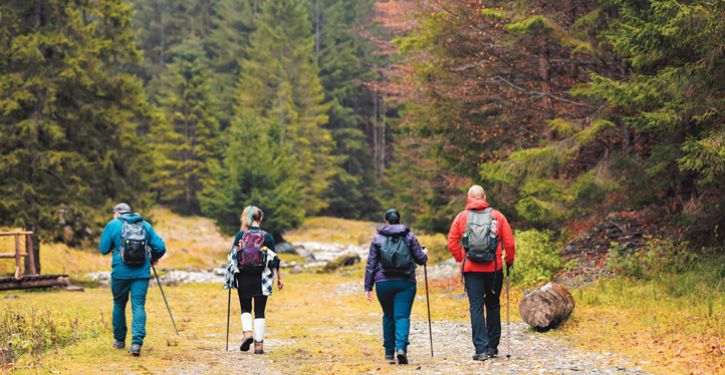Great recreation centers engage, invite and inspire social interaction throughout the entire campus community. Inclusive recreation and wellness programs are about outreach, support and encouraging healthy habits for any participant regardless of whether they’re a first-time visitor or frequent gym goer. Indoor facilities should be inviting while providing a variety of spaces that cater to every potential user. Outdoor spaces should be diverse in their offerings, strategic and thoughtful in their setting, and flexible and versatile to accommodate as many varied activities as possible for a diverse population of users.
Fitness in a New Direction
Trends continue to change rapidly in the world of campus recreation. On many campuses, colleges are seeing the demand for Olympic racks and weights exceeding the demand for cardio equipment for the first time. Functional fitness continues to grow in popularity, and with it comes different requirements for floor space. Outdoor recreation opportunities are at an all-time high due to changes implemented during the COVID-19 pandemic. Intramural and club sports continue to engage students at a high participation rate.
A Push Toward Overall Wellness
Beyond the differing priorities of students who tend to frequent rec centers, the entire student body is asking for more consideration to be given to overall wellness. We’re in the midst of a wellness boom, largely driven by the increasing levels of stress carried by today’s students, which professionals are identifying as an epidemic. A growing appreciation for emotional and physical balance has resulted in an unprecedented focus on amenities and programs that can proactively reduce stress. Wellness, nutritional services, social engagement and instructional programs around meditation and mindfulness are critical in supporting the ambition of today’s students and creating inclusive recreation. Providing more inclusive wellness requires higher visibility, as well as easy and intuitive access to programs throughout campus. Considering outdoor recreation in the forms of trail networks, pop up fitness stations and informal gathering spaces can help integrate individual wellness into the overall campus experience and drive students toward additional recreation programming.
Sleep pods, massage chairs and meditation stations — once thought to be frivolous amenities — have become a much-needed reprieve from the demands of virtual engagements. Nutrition, counseling and health services are almost always part of the conversation when designing new recreation facilities centered around inclusion recreation. Programs like these not only appeal to athletes and frequent gym-goers, but also attract students who may otherwise not engage with a recreation center. A visible and welcoming entry sequence combined with diverse program offerings can eliminate intimidation and welcome more people to engage and connect in a way that works for them.
Emily Parris, an architect and senior associate at Sasaki, specializes in recreation, athletics and wellness design. Learn more about Parris by visiting sasaki.com/people/emily-parris.










